Input interpretation

fluorophenylacetic acid
Chemical names and formulas
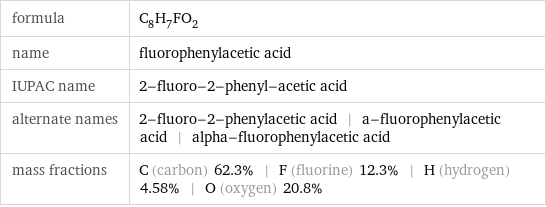
formula | C_8H_7FO_2 name | fluorophenylacetic acid IUPAC name | 2-fluoro-2-phenyl-acetic acid alternate names | 2-fluoro-2-phenylacetic acid | a-fluorophenylacetic acid | alpha-fluorophenylacetic acid mass fractions | C (carbon) 62.3% | F (fluorine) 12.3% | H (hydrogen) 4.58% | O (oxygen) 20.8%
Lewis structure
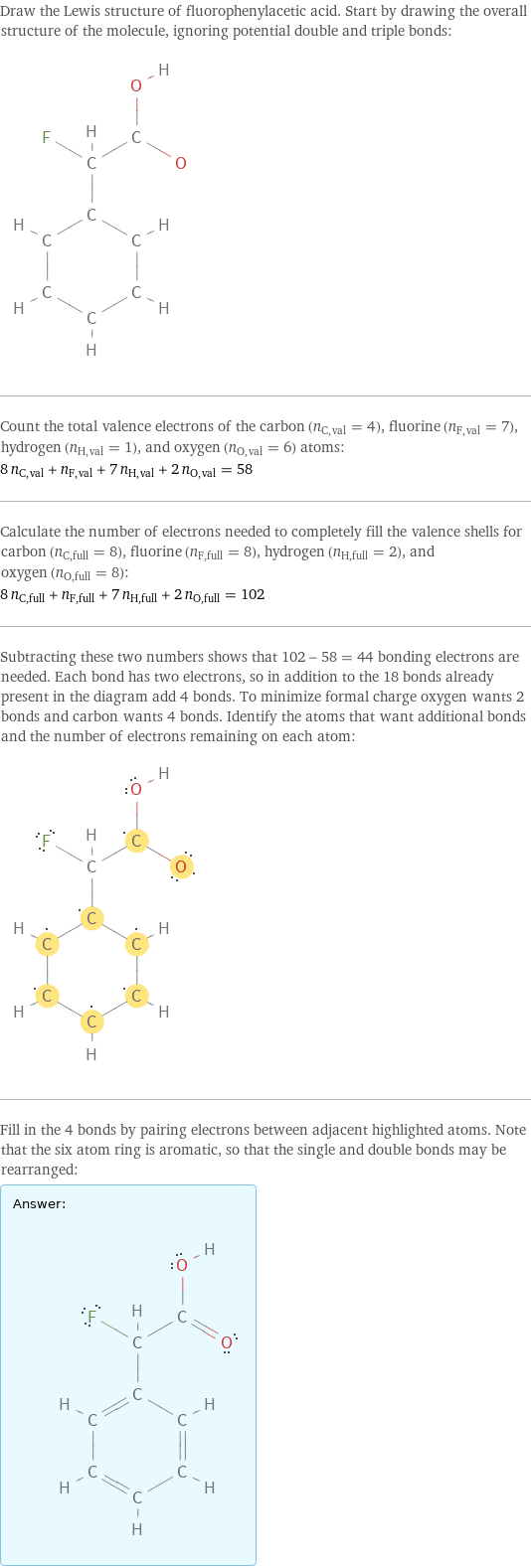
Draw the Lewis structure of fluorophenylacetic acid. Start by drawing the overall structure of the molecule, ignoring potential double and triple bonds: Count the total valence electrons of the carbon (n_C, val = 4), fluorine (n_F, val = 7), hydrogen (n_H, val = 1), and oxygen (n_O, val = 6) atoms: 8 n_C, val + n_F, val + 7 n_H, val + 2 n_O, val = 58 Calculate the number of electrons needed to completely fill the valence shells for carbon (n_C, full = 8), fluorine (n_F, full = 8), hydrogen (n_H, full = 2), and oxygen (n_O, full = 8): 8 n_C, full + n_F, full + 7 n_H, full + 2 n_O, full = 102 Subtracting these two numbers shows that 102 - 58 = 44 bonding electrons are needed. Each bond has two electrons, so in addition to the 18 bonds already present in the diagram add 4 bonds. To minimize formal charge oxygen wants 2 bonds and carbon wants 4 bonds. Identify the atoms that want additional bonds and the number of electrons remaining on each atom: Fill in the 4 bonds by pairing electrons between adjacent highlighted atoms. Note that the six atom ring is aromatic, so that the single and double bonds may be rearranged: Answer: | |
3D structure
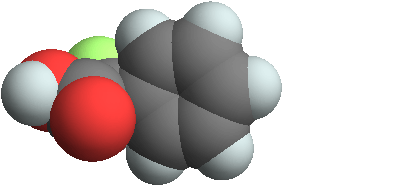
3D structure
Basic properties
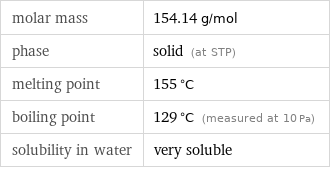
molar mass | 154.14 g/mol phase | solid (at STP) melting point | 155 °C boiling point | 129 °C (measured at 10 Pa) solubility in water | very soluble
Units

Chemical identifiers
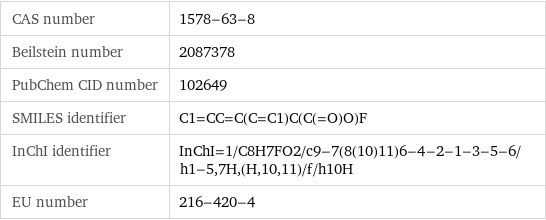
CAS number | 1578-63-8 Beilstein number | 2087378 PubChem CID number | 102649 SMILES identifier | C1=CC=C(C=C1)C(C(=O)O)F InChI identifier | InChI=1/C8H7FO2/c9-7(8(10)11)6-4-2-1-3-5-6/h1-5, 7H, (H, 10, 11)/f/h10H EU number | 216-420-4